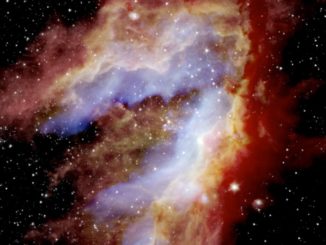Messier 17, aka the Swan or Omega nebula, is a favourite target for amateur astronomers, appearing as an extended cloud-like structure that is impressive in even modest telescopes. But the view is nothing short of spectacular in a shot from the Wide Field Imager on the European Southern Observatory’s 2.2-metre La Silla telescope in Chile. One of the sharpest views ever captured of the entire nebula, M17 is revealed as a vast complex of gas, dust and newborn stars, one of the brightest star-forming regions in the Milky Way. Located in the constellation Sagittarius, M17 is between 5,000 and 6,000 light years from Earth.




